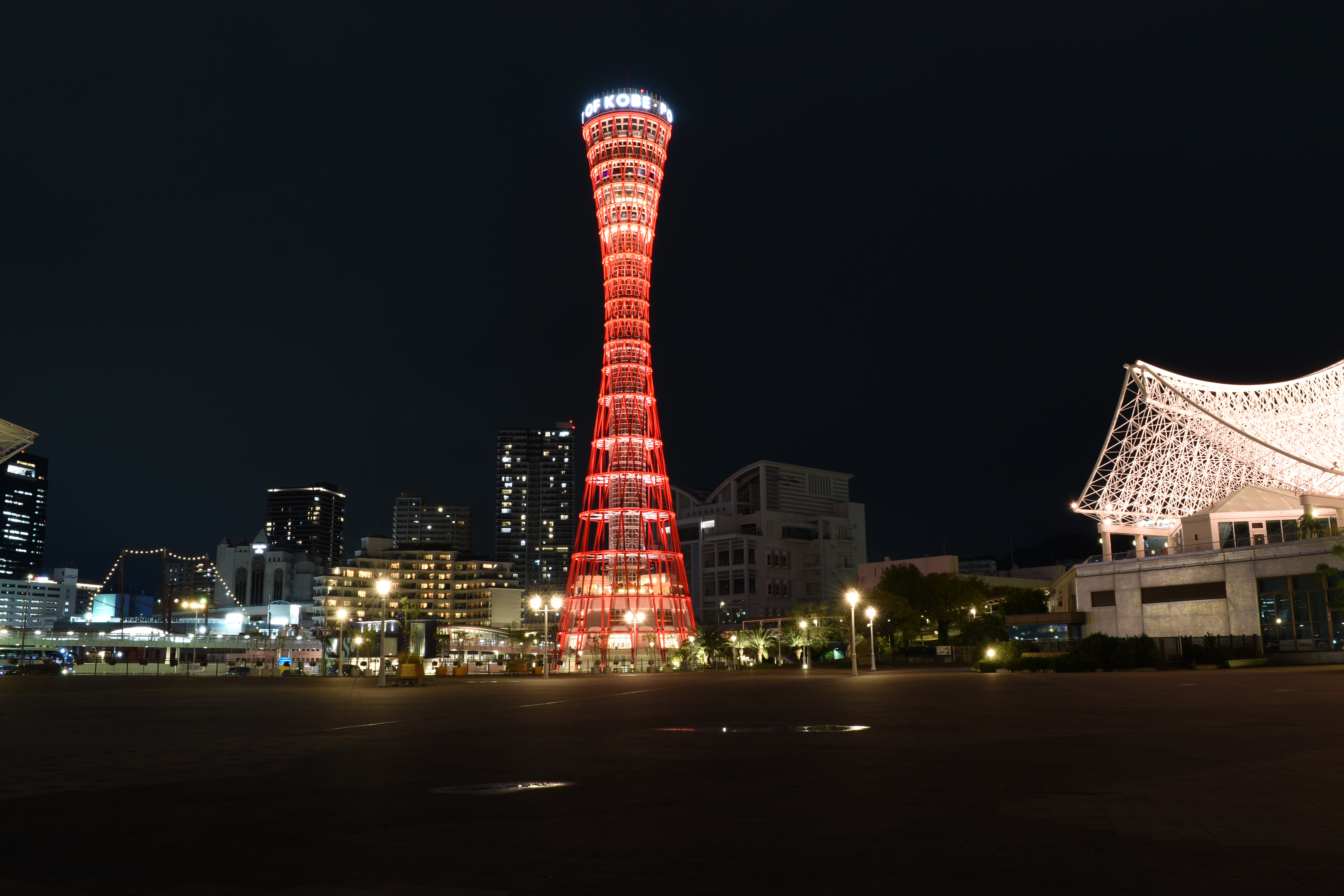- Nature / Scenery
- History / Culture
- Traditions / Performing Arts
- Experiences
No.f_0027
Retreat into Nature in Kobe and Awaji Island
Hyogo Prefecture, bordered by both sea and mountains and adjacent to the cities of Osaka and Kyoto, offers striking natural scenery. A route that takes you from the historic port city of Kobe to Awaji Island in the Seto Inland Sea invites travelers to embrace “wellness tourism,” engaging with nature while reconnecting with body and mind.
Hiking Rugged Rock Trails
Since opening to international trade in 1868, Kobe has thrived as a gateway port. Just north of the city center stretches the Rokko mountain range, spanning about 30 kilometers east to west. Mount Rokko, designated as one of the 100 Famous Japanese Mountains, it is one of the Kansai region’s most beloved hiking spots. With mountains so close to the city, access from downtown Kobe is convenient, with the train stations along the mountain’s base an easy starting point to enjoy well-trodden trails.
Among the many trails, the most popular is the route that passes through the Rock Garden and continues up to the highest peak. Hiking time is about five hours, and since the trail involves crossing rocky terrain, proper hiking gear is recommended.
From Hankyu Ashiyagawa Station, the route winds through a residential neighborhood until you arrive at the trailhead. Soon, the Rock Garden comes into view—a dramatic landscape of granite weathered and eroded over millennia. Here and there, hikers must use both hands to climb over rugged boulders, creating a sense of light climbing adventure.
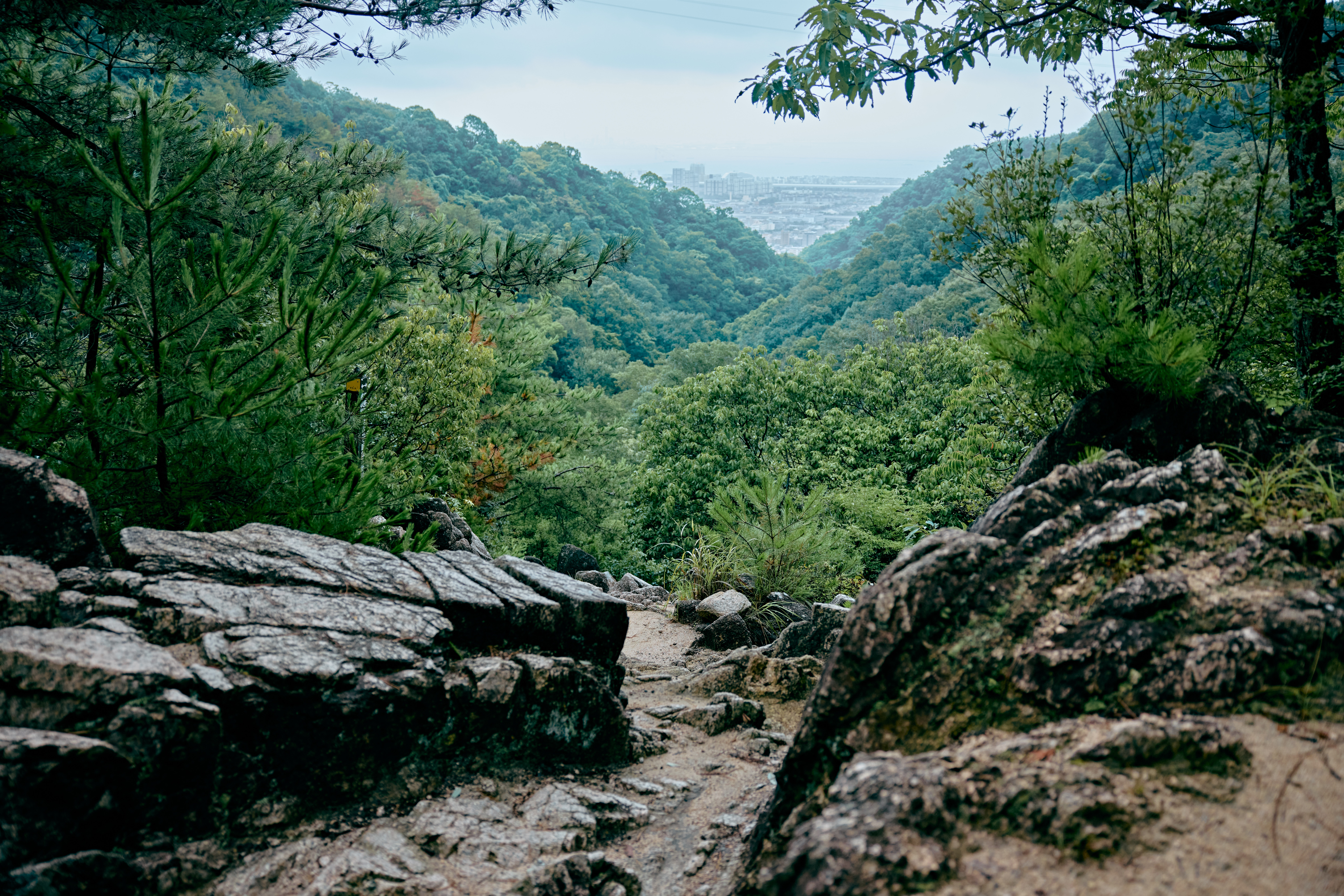 The Rock Garden’s jumble of boulders, with views of Kobe’s cityscape and coastline beyond.
The Rock Garden’s jumble of boulders, with views of Kobe’s cityscape and coastline beyond.
Further along, you’ll encounter Kazafuki Iwa at an elevation of 447 meters, its wild form one of the trail’s highlights. On clear days, vast panoramas stretch from Kobe across to Osaka.
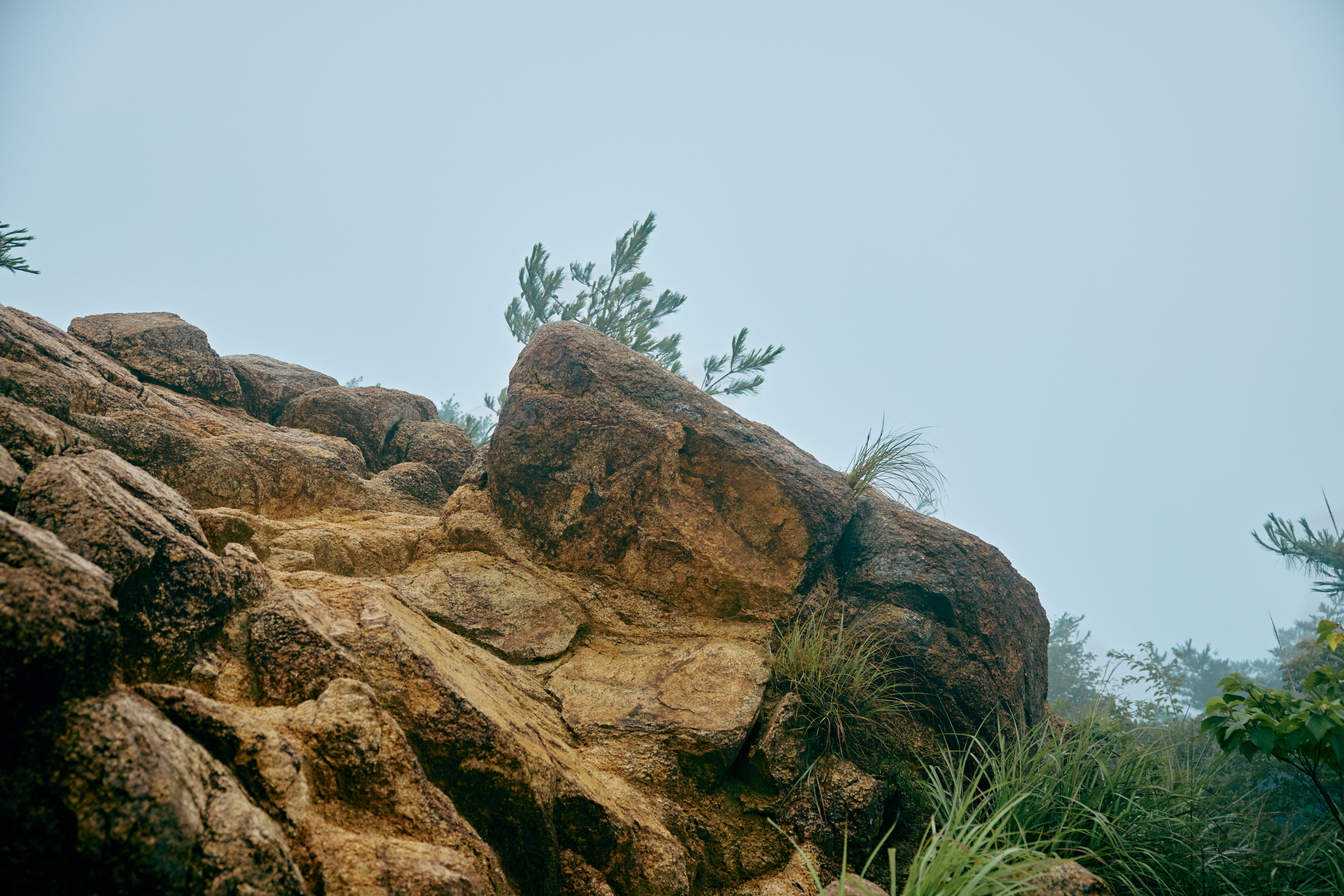 Kazafuki Iwa
Kazafuki Iwa
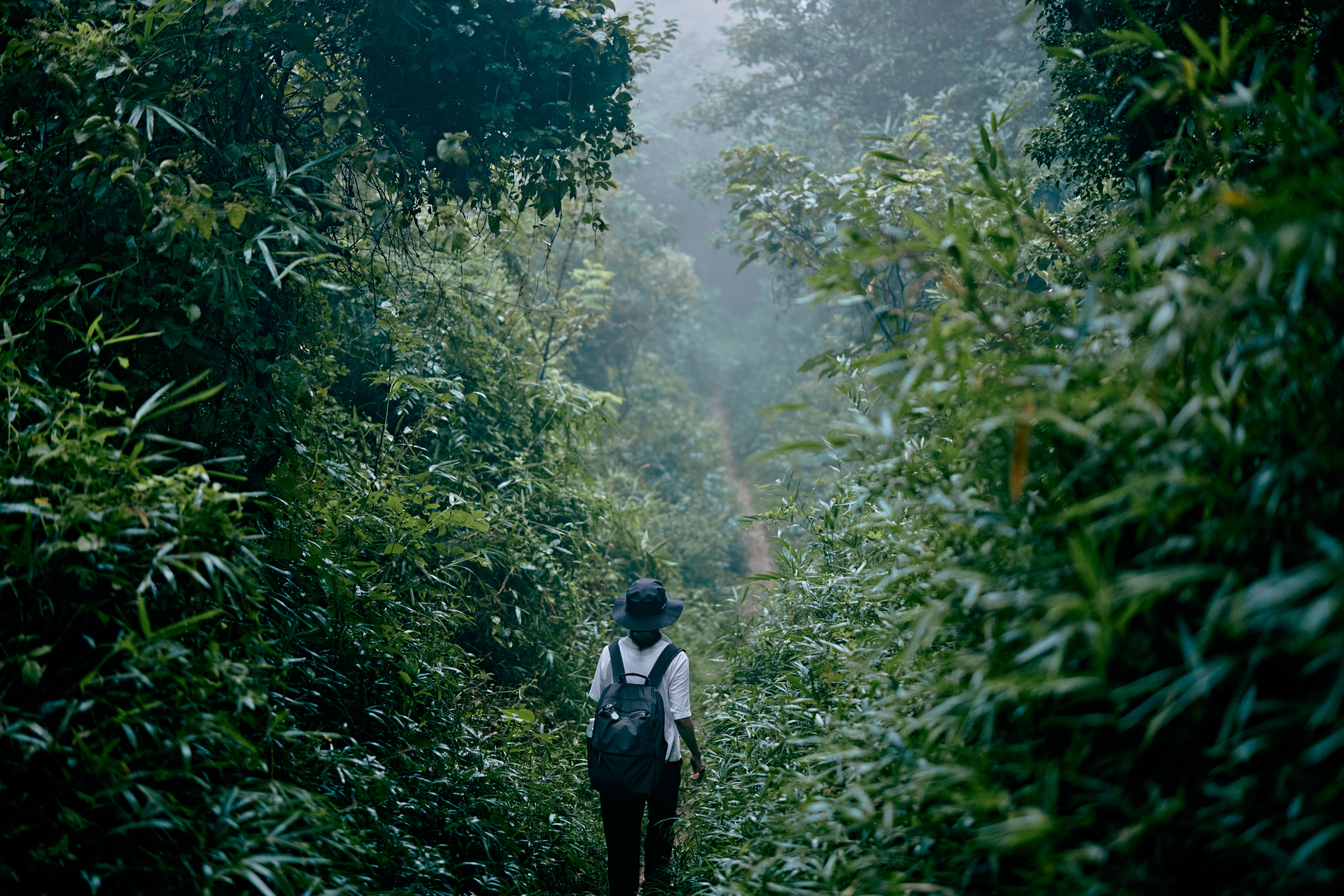
Pressing onward brings you to Mount Rokko’s highest peak: Rokko Saikoho, standing at 931 meters. From the summit, breathtaking views extend northward over Arima and beyond.
As the scenery transforms with the changing altitude, the hike offers both visual splendor and the pure joy of moving your body.
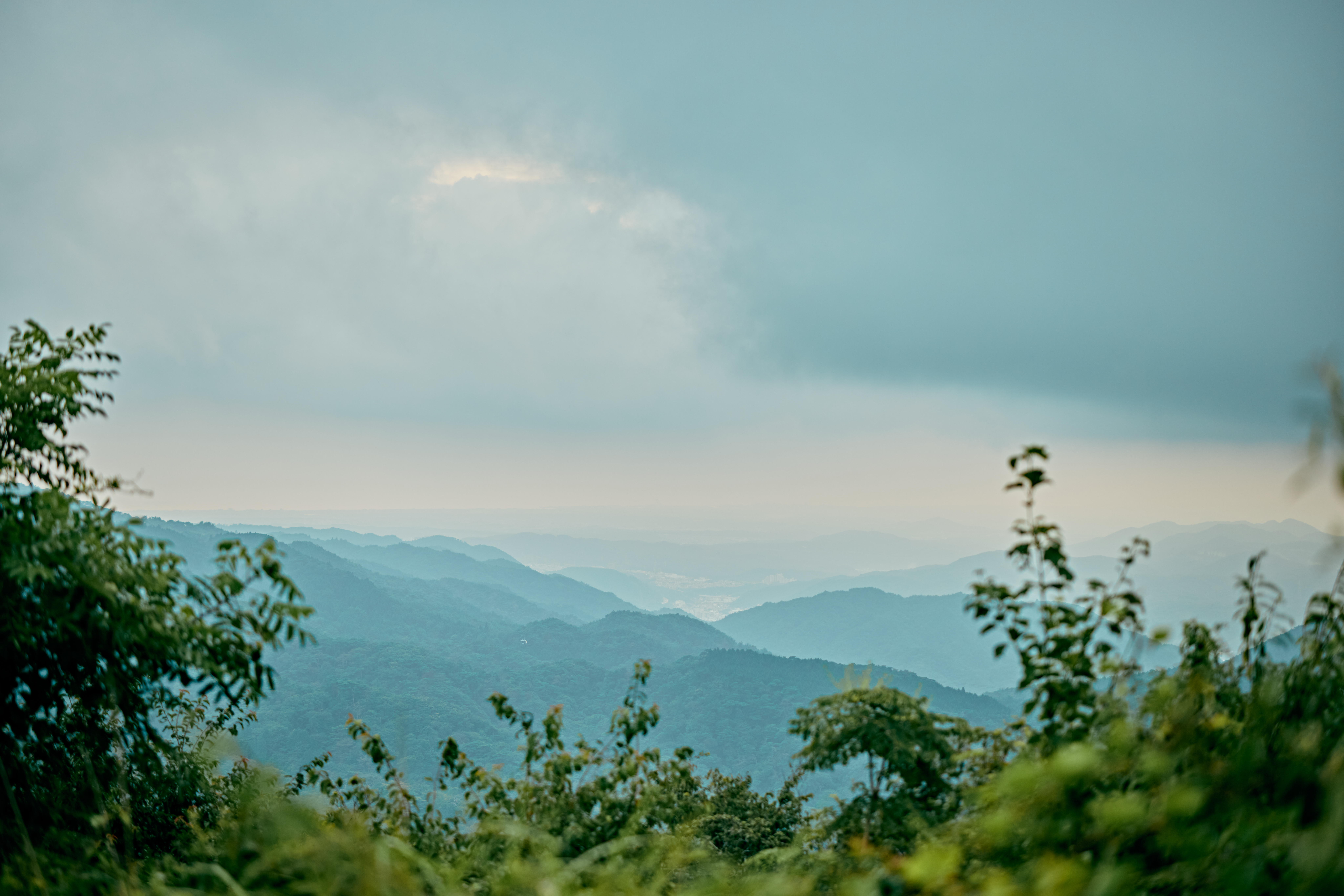
A Local Lunch High on Mount Rokko
Mount Rokko offers more than hiking alone. Over the years, it has been developed into a mountain resort, home to attractions such as Kobe City Rokkosan Pasture and Rokko Garden Terrace.
One standout is Rokkosan Silence Resort, which opened in 2019. The site restores the former Rokko Hotel, built in 1929 and recognized as a Heritage of Industrial Modernization by the Japanese government, under the direction of renowned architect Michele de Lucchi.
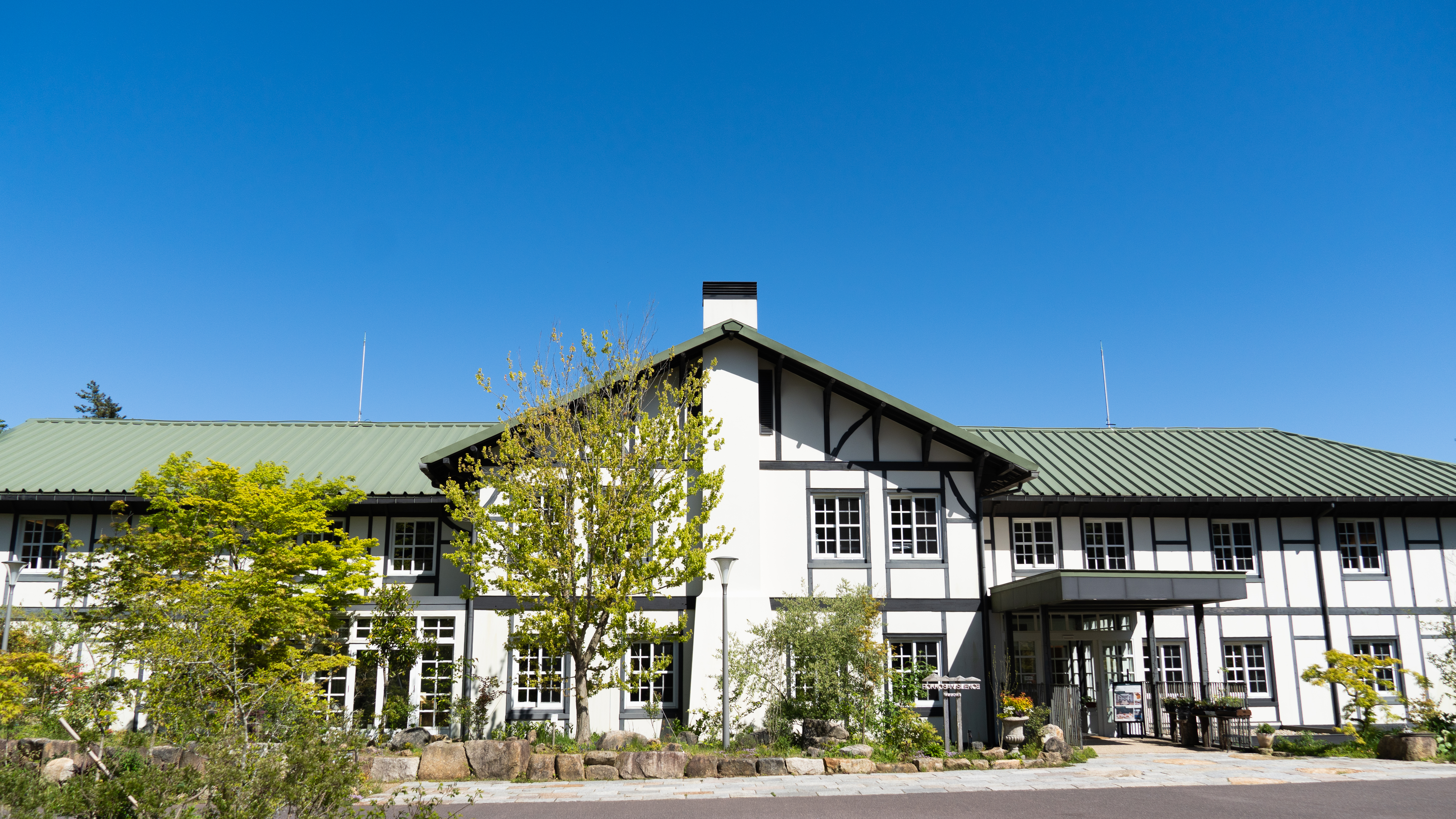 The historic Rokko Hotel, closed in 2017, restored as part of the Rokkosan Silence Resort.
The historic Rokko Hotel, closed in 2017, restored as part of the Rokkosan Silence Resort.
Inside the old building (former Rokko Hotel), the cafeteria retains its original 1929 stained glass ceiling, preserving a sense of its history.

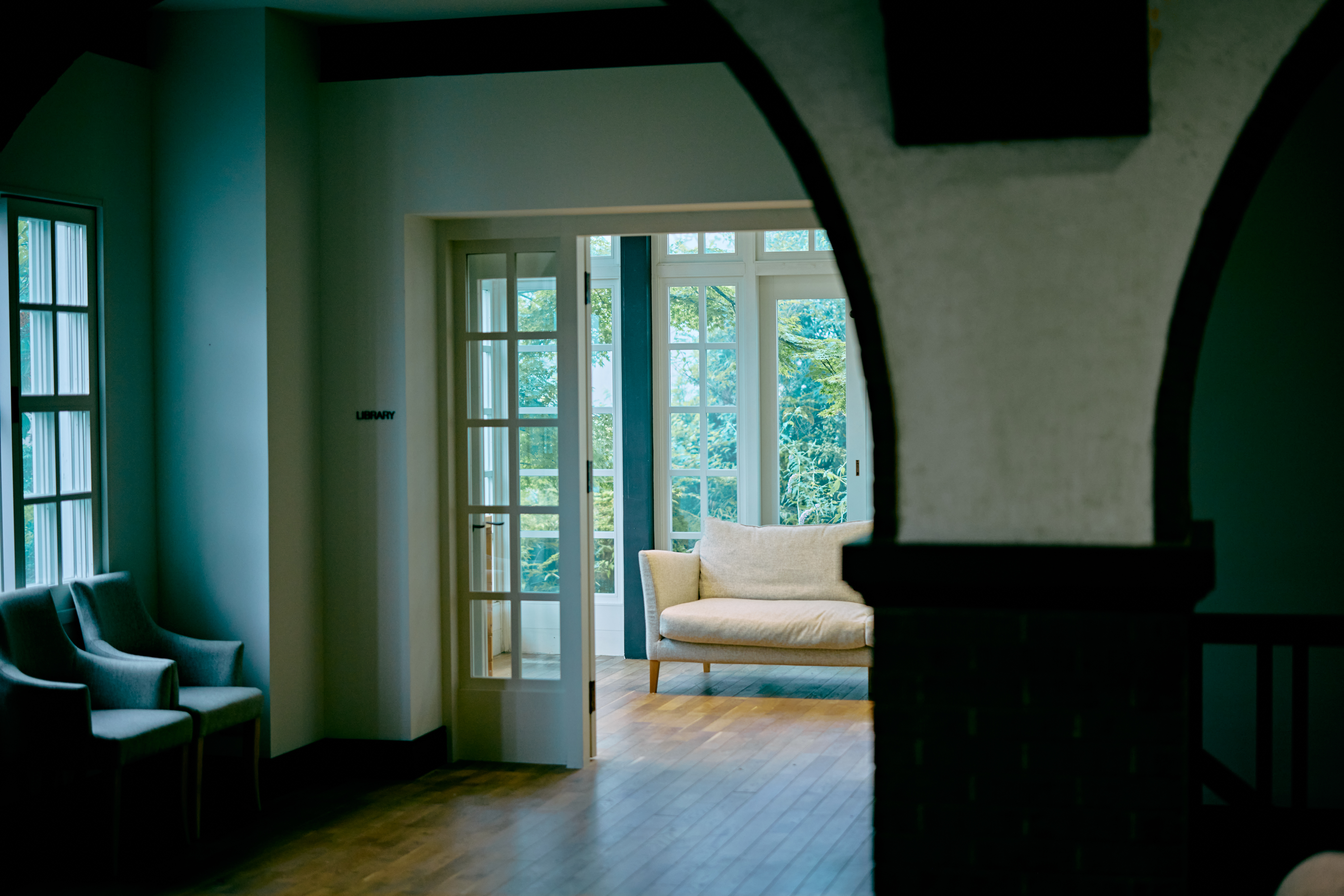
On the seaward side, the Sora no Dining restaurant commands sweeping views across Osaka Bay, the Kobe area, and as far as Awaji Island.
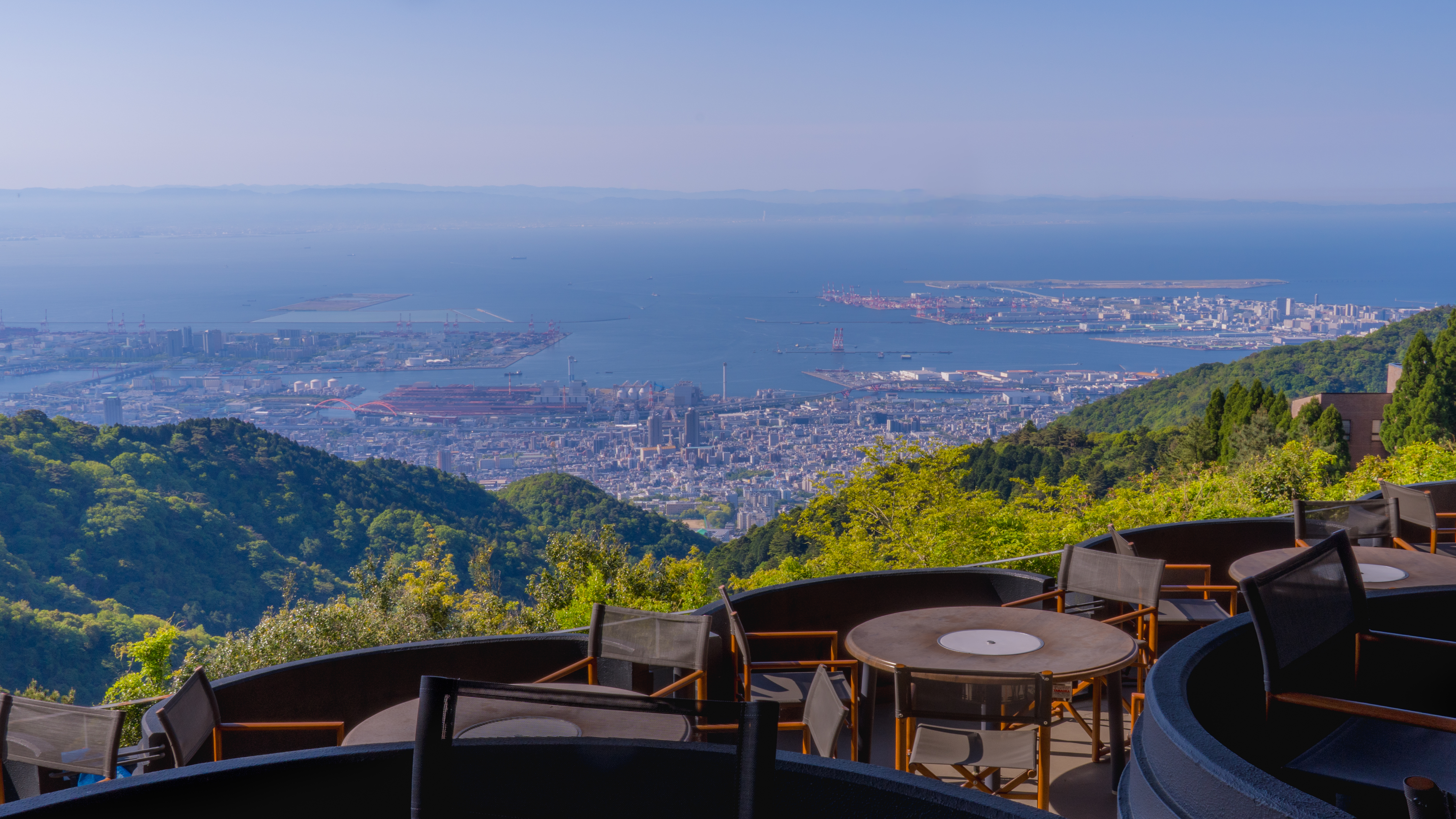 The view from the terrace seating.
The view from the terrace seating.
Lunch and dinner offerings range from teppanyaki and barbecue to full-course meals and à la carte dishes. The ingredients center on Hyogo’s finest local produce: Tajima beef, Yoka pork, and pesticide-free vegetables grown in Inagawa Town.
Tajima beef, the genetic origin of renowned Kobe beef, is prized for its exquisite balance of lean and fat, while Yoka pork, rare and highly regarded, is known for its sweet, high-quality fat. A popular à la carte dish, the Tajima Beef and Yoka Pork Hamburg Steak, combines the very best of both.
It is a dish that is the pride of the chef, who shares: “Please savor the rich flavors of meat raised with care here in Hyogo, and the natural goodness of our local vegetables.”
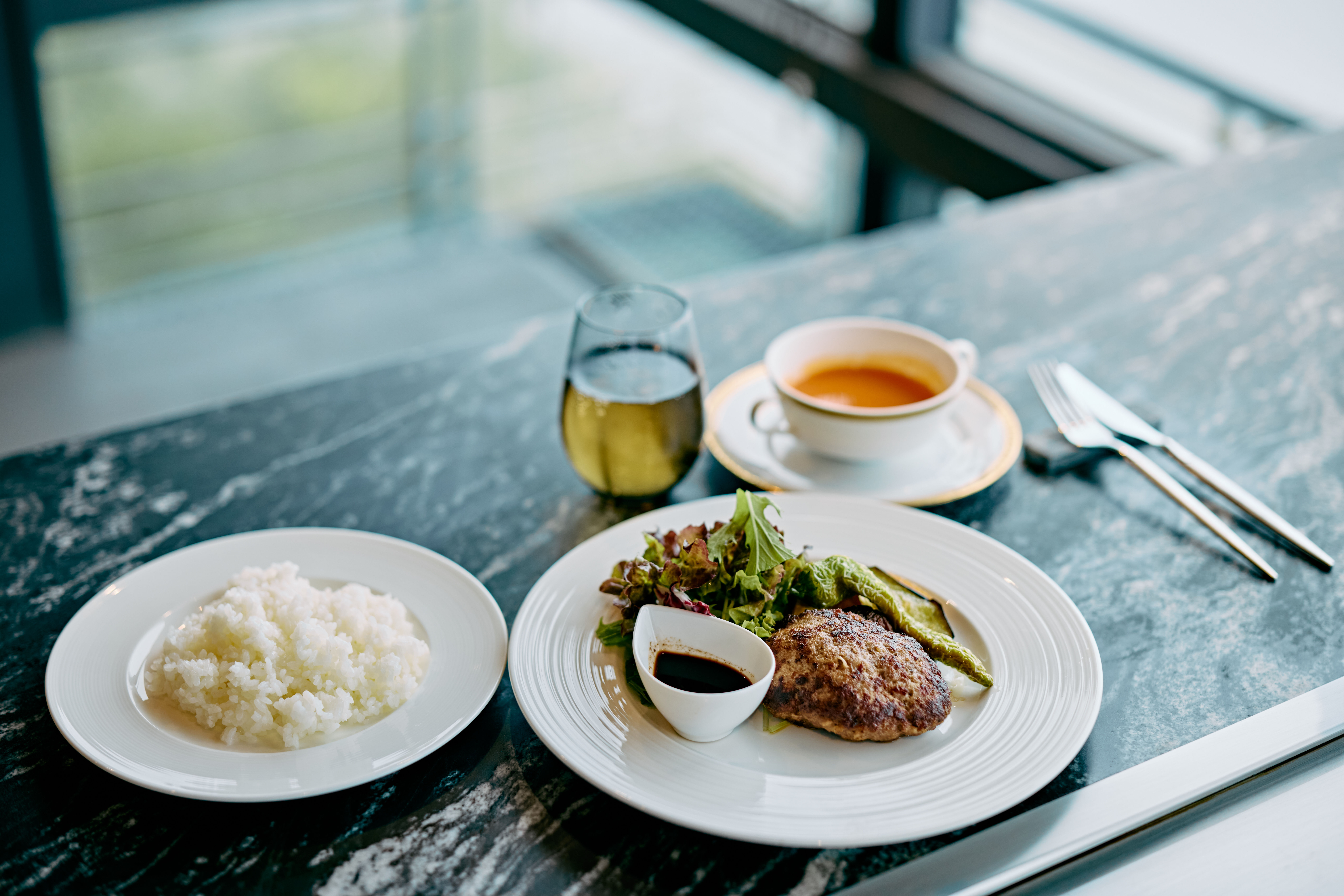 The Tajima Beef and Yoka Pork Hamburg Steak (2,500 yen). Served with a sweet sauce with just a hint of bitter notes, made from a blend of red wine, honey from the resort’s own hives, and espresso.
The Tajima Beef and Yoka Pork Hamburg Steak (2,500 yen). Served with a sweet sauce with just a hint of bitter notes, made from a blend of red wine, honey from the resort’s own hives, and espresso.
BOOK YOUR STAY IN KOBE
Discover Hidden Waterfalls and History on Awaji Island
After a tranquil moment in the Rokko mountain range, continue on to Awaji, the largest island in the Seto Inland Sea, blessed with abundant nature.
From Kobe, it takes about 1 hour and 20 minutes by express bus to Sumoto, in the island’s center. Awaji’s southern tip connects to Shikoku by bridge, and buses run from Sumoto to Tokushima in about 90 minutes.
Hyogo is known for its many famous waterfalls, and though Awaji has neither high mountains nor large rivers, there have been more than 100 identified on the island.
A unique way to discover them is the “Gaina Falls” and Mountain Stream Wellness Nature Tour. “Gaina Falls” is Awaji dialect for “Awesome Falls,” and the tour reveals secluded waterfalls so hidden they are not even on tourist maps—and often unknown to locals.
Guides include Fujiko Taketani and Musafur of Smile∞Ribbon. Fluent in English, Musafur is also a self-proclaimed “waterfall hunter,” uncovering secret cascades even locals don’t know about across the island.
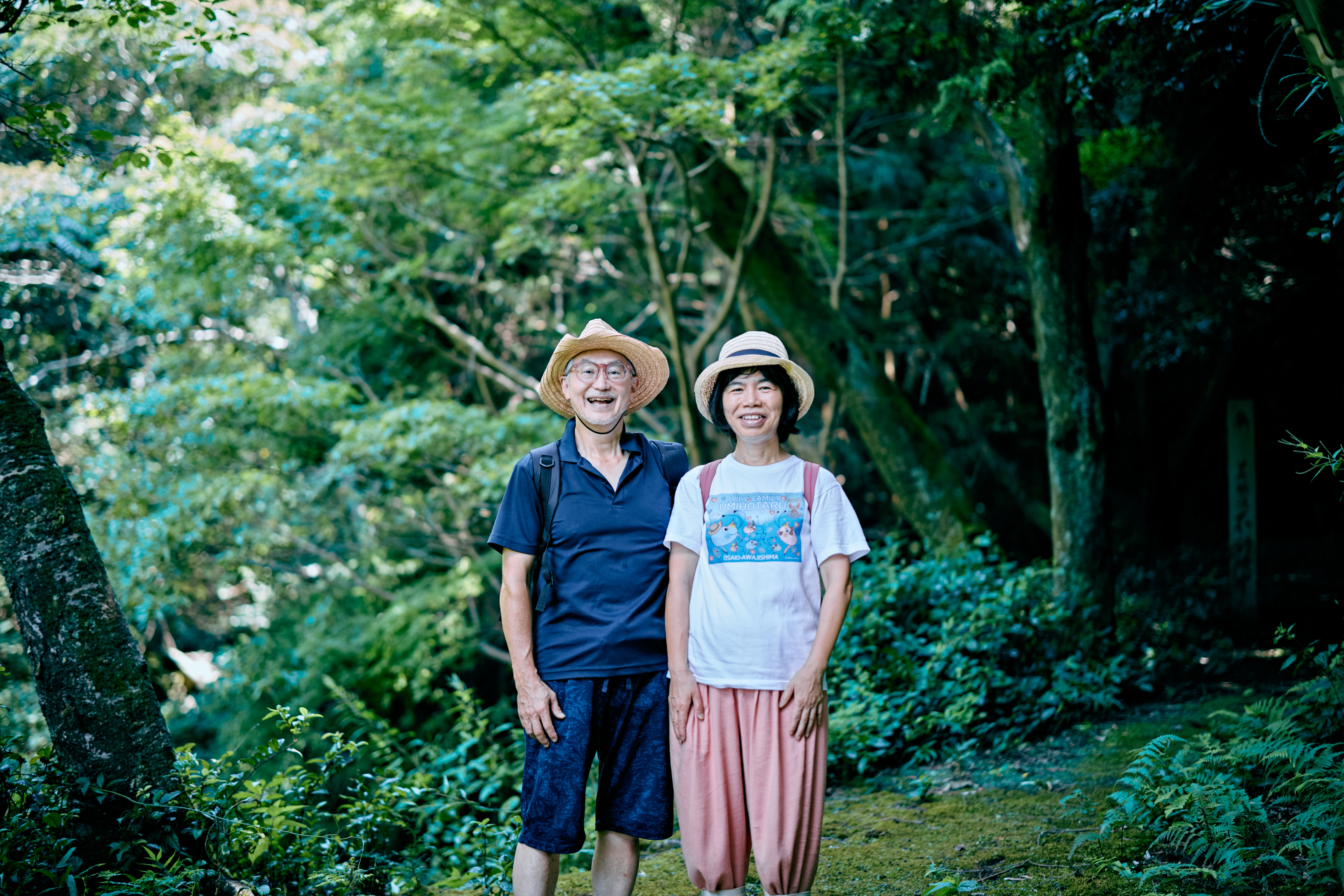 Guides Musafur (left) and Fujiko Taketani (right).
Guides Musafur (left) and Fujiko Taketani (right).
“In rain-scarce Awaji, people created countless irrigation ponds more than 1,700 years ago. These ponds became the sources of waterfalls. Awaji’s ancient abundance of food owes much to this water management system,” explains Musafur.
The waterfalls visited during the tour vary by season, but usually the leisurely half-day tour explores two sites.
Take, for instance, Zenza Falls in Awaji City. Climbing past a campsite into a dense forest, a 15-meter cascade appears amid a surreal, mystical atmosphere.
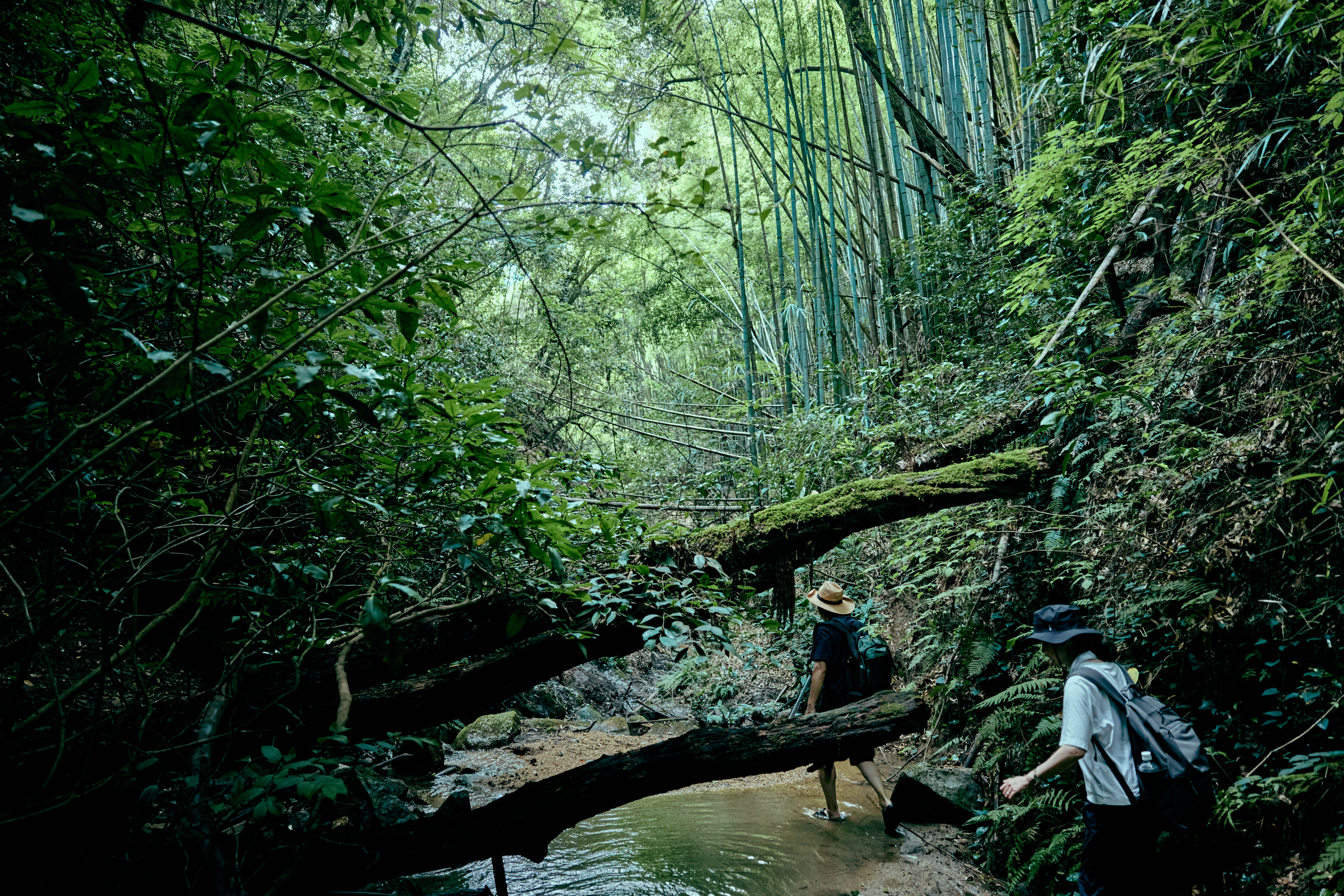
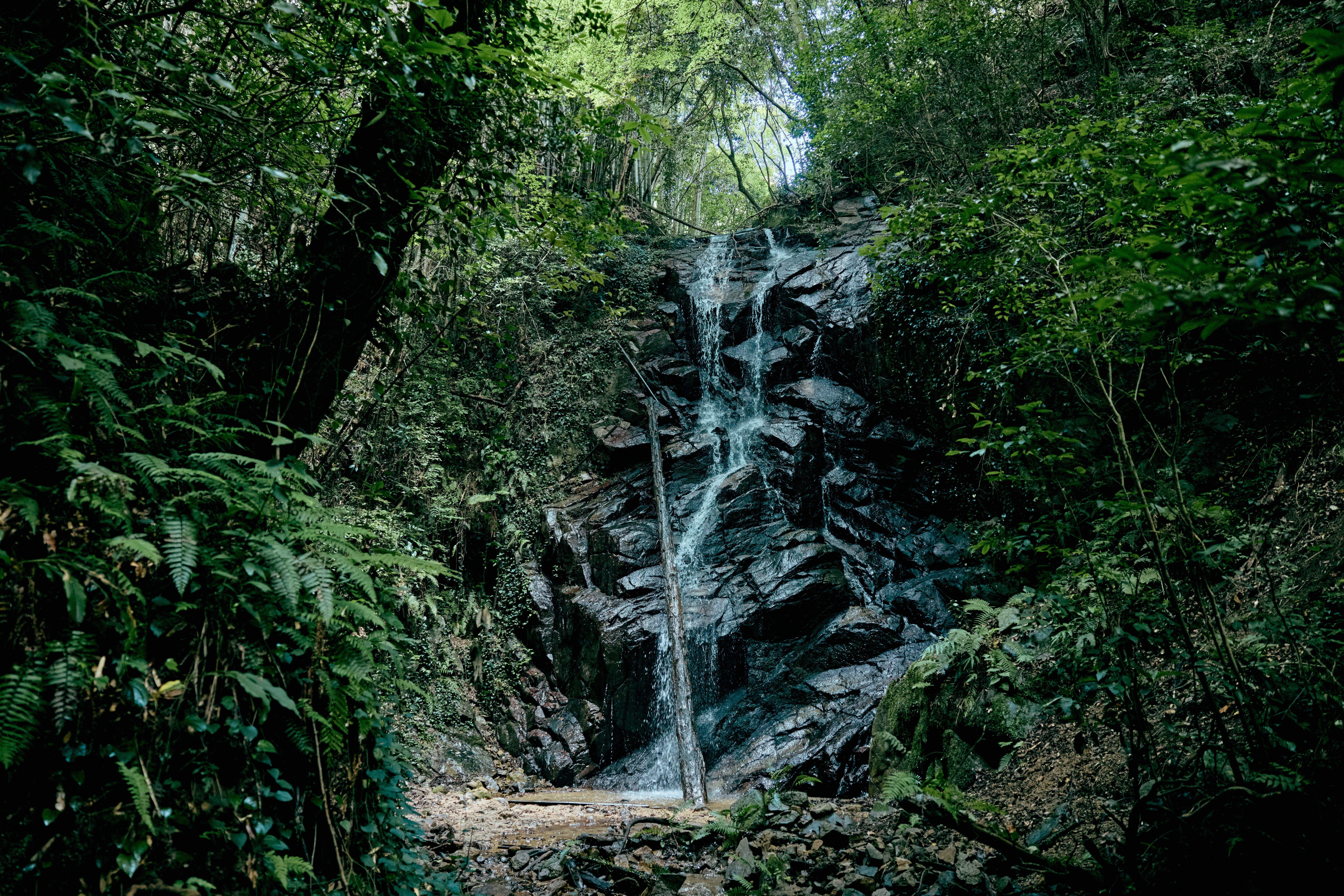 Zenza Falls.
Zenza Falls.
Miya Falls in Sumoto City is another highlight, where water plunges down a massive rock wall, giving the air a sense of purity and sanctity.
“This site is said to have been a place of shugendo ascetic practice. Carved into the rock are ancient characters, now too weathered to decipher,” says Musafur.
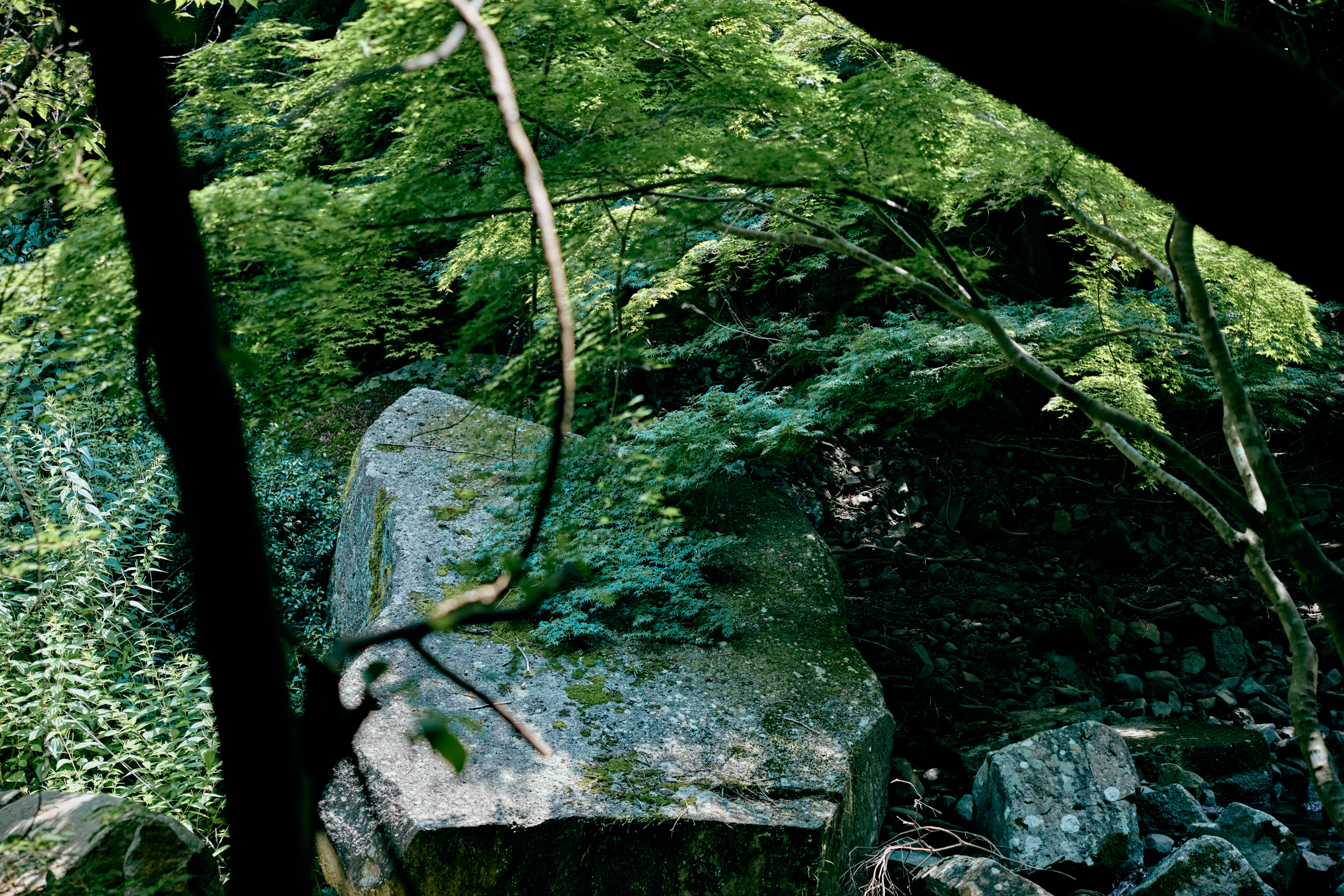
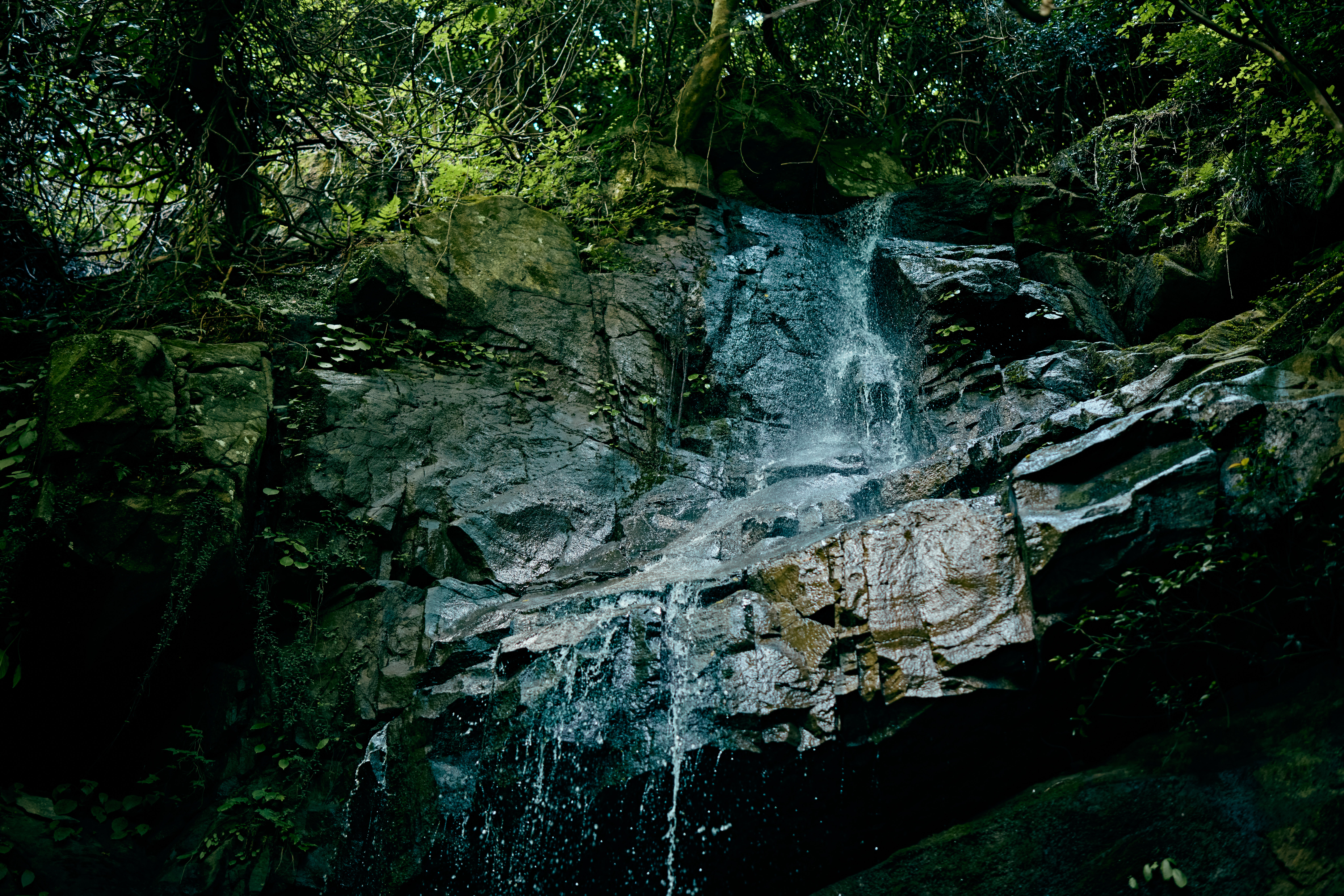 Miya Falls.
Miya Falls.
Blending local history and myth, the guides’ commentary infinitely enriches the journey. Through these waterfalls, you’re guaranteed to uncover Awaji Island’s hidden depths.
Brushing Up on Your Artistic Sensibility through Indigo Dyeing
Another one-of-a-kind experience Awaji Island has to offer is indigo dyeing with locally grown indigo leaves at workshop and shop AiAii.
Natural indigo dyeing uses the traditional fermentation vat method, where dried and fermented indigo leaves (sukumo) are combined with lye to create a natural fermenting dye. Because it relies on natural materials, the process is gentle on the body and eco-friendly—the leftover dye liquid can even be returned to the soil, making it a truly sustainable craft.
The color produced, indigo blue, is also known as “Japan Blue,” recognized worldwide as a symbol of Japan.
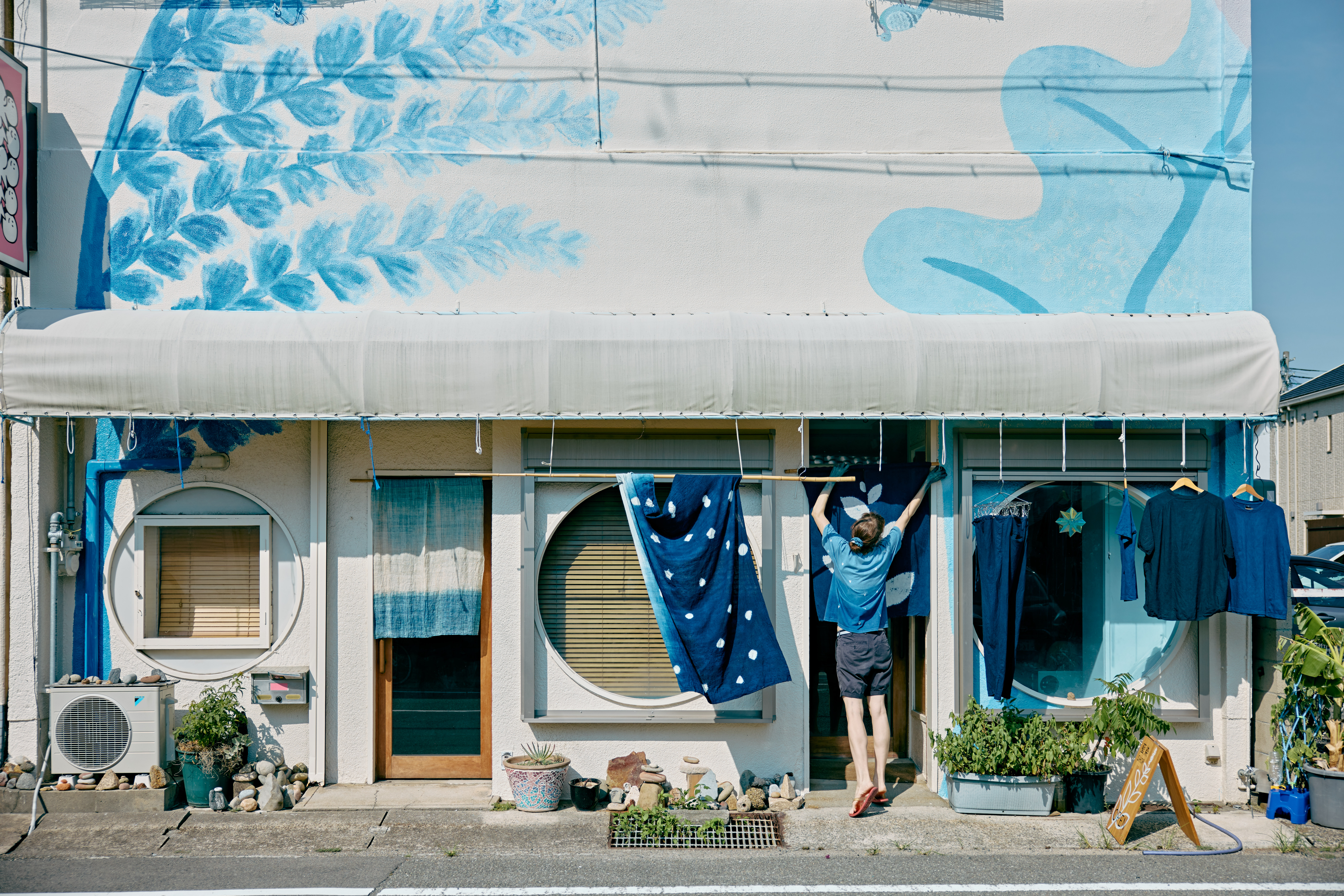
The workshop is run by Junichi Okada, who relocated to Awaji in 2015, and his wife Sally Hancox from the UK. They cultivate indigo, prepare the dye, and create dyed goods—all entirely by hand.
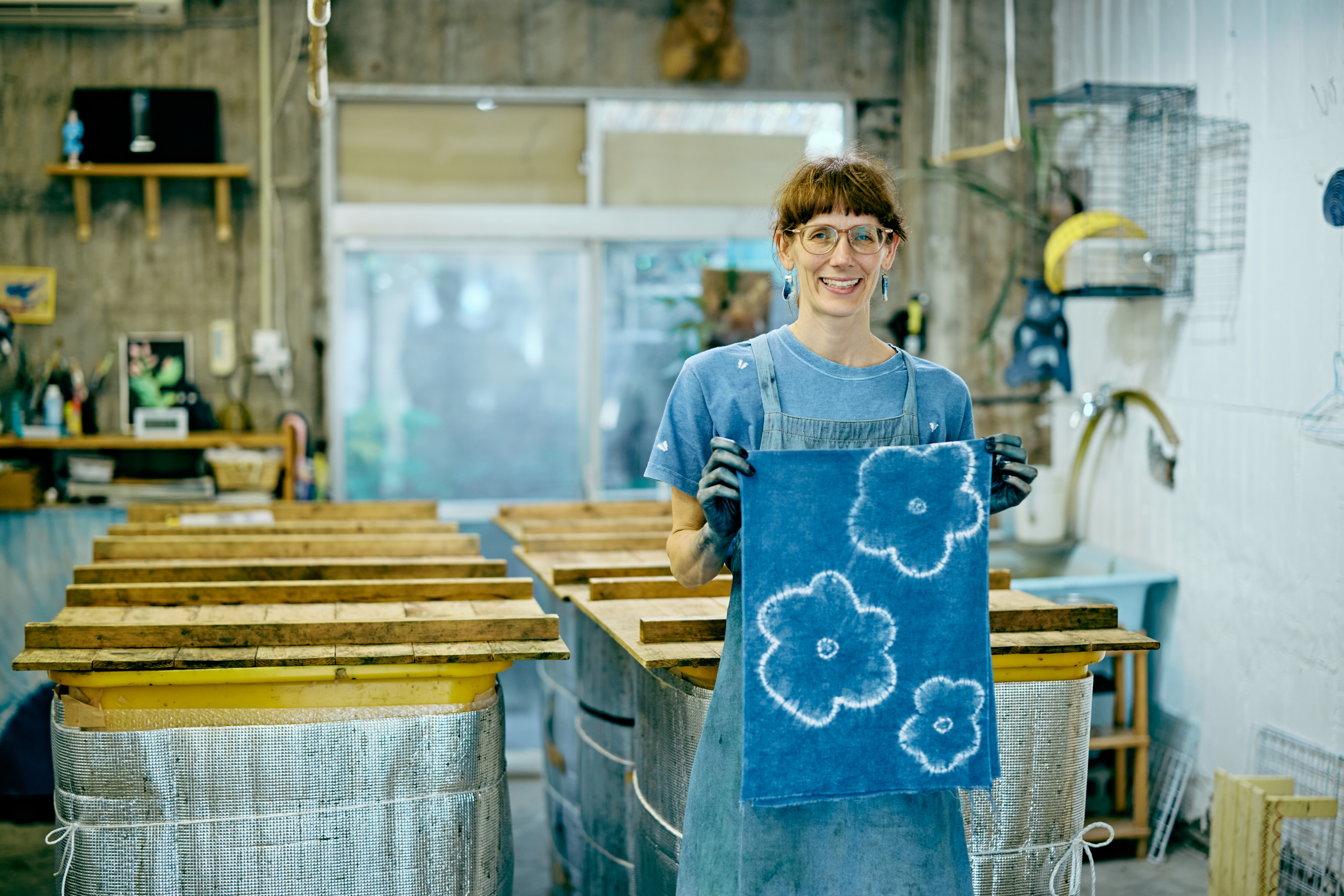 Sally Hancox.
Sally Hancox.
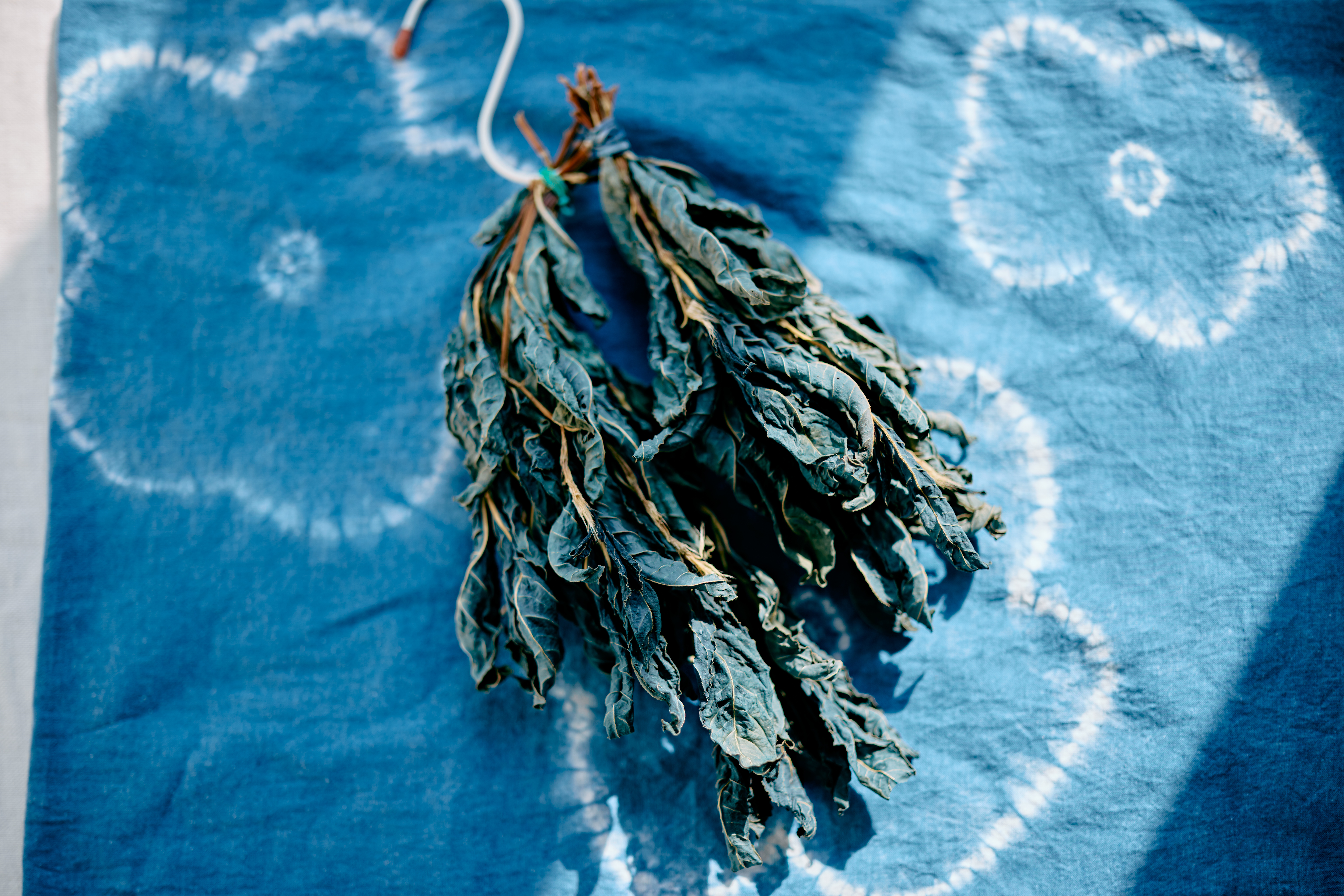 Dried indigo leaves.
Dried indigo leaves.
Visitors can try shiborizome (tie-dye) techniques, creating patterns on items such as tenugui hand towels or T-shirts by binding white fabric with thread or rubber bands before immersing it in dye.
“The fun of indigo dyeing is all about designing patterns freely. With your own artistic sensibility, please come along and make something that’s uniquely yours,” Sally encourages. English-language support makes the experience popular among international visitors.
First, you’ll be shown examples of different tying techniques. Then, while thinking about the kind of pattern you want to create, you’ll fold and bind the fabric with rubber bands or clips.
After planning your design, bind the fabric with rubber bands or clips, then immerse and knead it in dye for two minutes. Repeated five times, the fabric deepens from pale blue to rich navy.
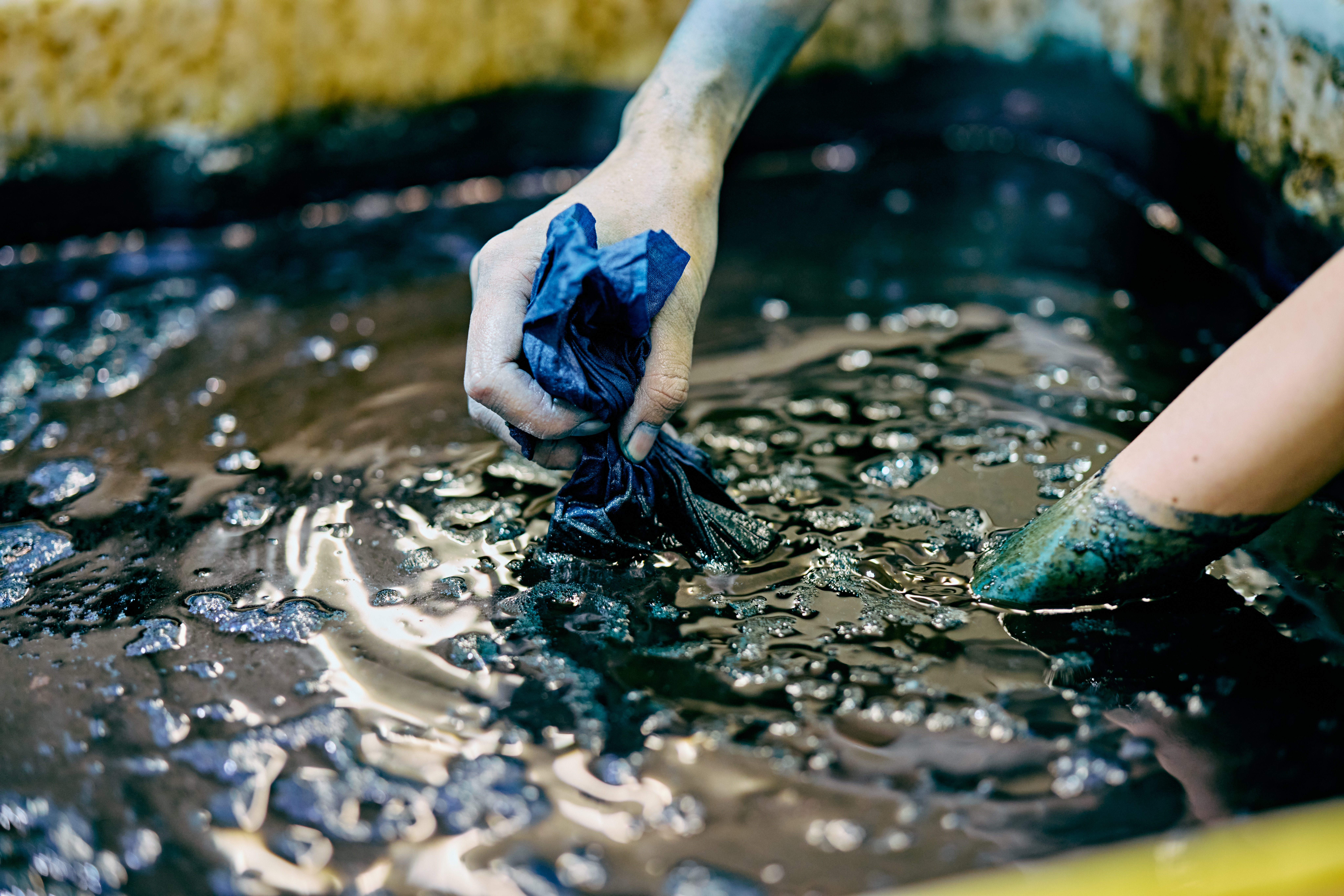
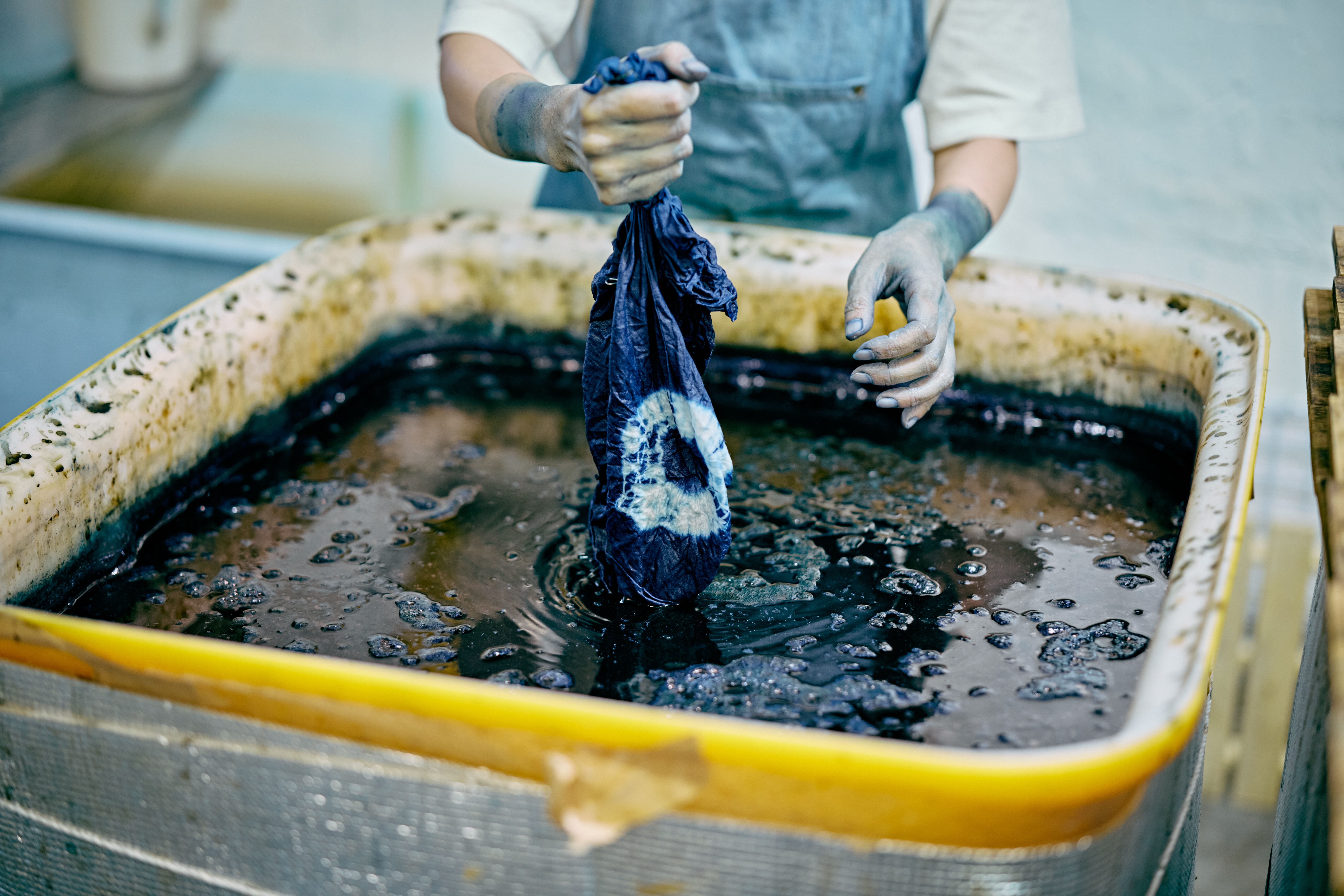 Washing out dyed fabric between immersions.
Washing out dyed fabric between immersions.
The thrill comes when you finally unfold the fabric to reveal the pattern. Crafting your own one-of-a-kind indigo-dyed work of art is a memory you’ll never forget.

BOOK YOUR STAY ON AWAJI ISLAND
Glittering Night Views from Kobe Port Tower
To conclude a journey immersed in nature, return to Kobe’s bay area and cool down while taking in the glittering night views. Since its opening in 1963, Kobe Port Tower has been loved as a city landmark. From here, you can enjoy a port cityscape that feels distinctly different from the view from Mount Rokko.
Kobe Port Tower reopened in 2024 after a full renovation, complete with the addition of a fully open rooftop deck. From the glass-walled sky promenade, you can take in a 360° panorama of Kobe’s cityscape, where mountains and sea sit close together despite the urban setting. Especially unmissable is the so-called “10-million-dollar night view,” when the city glows after dark.
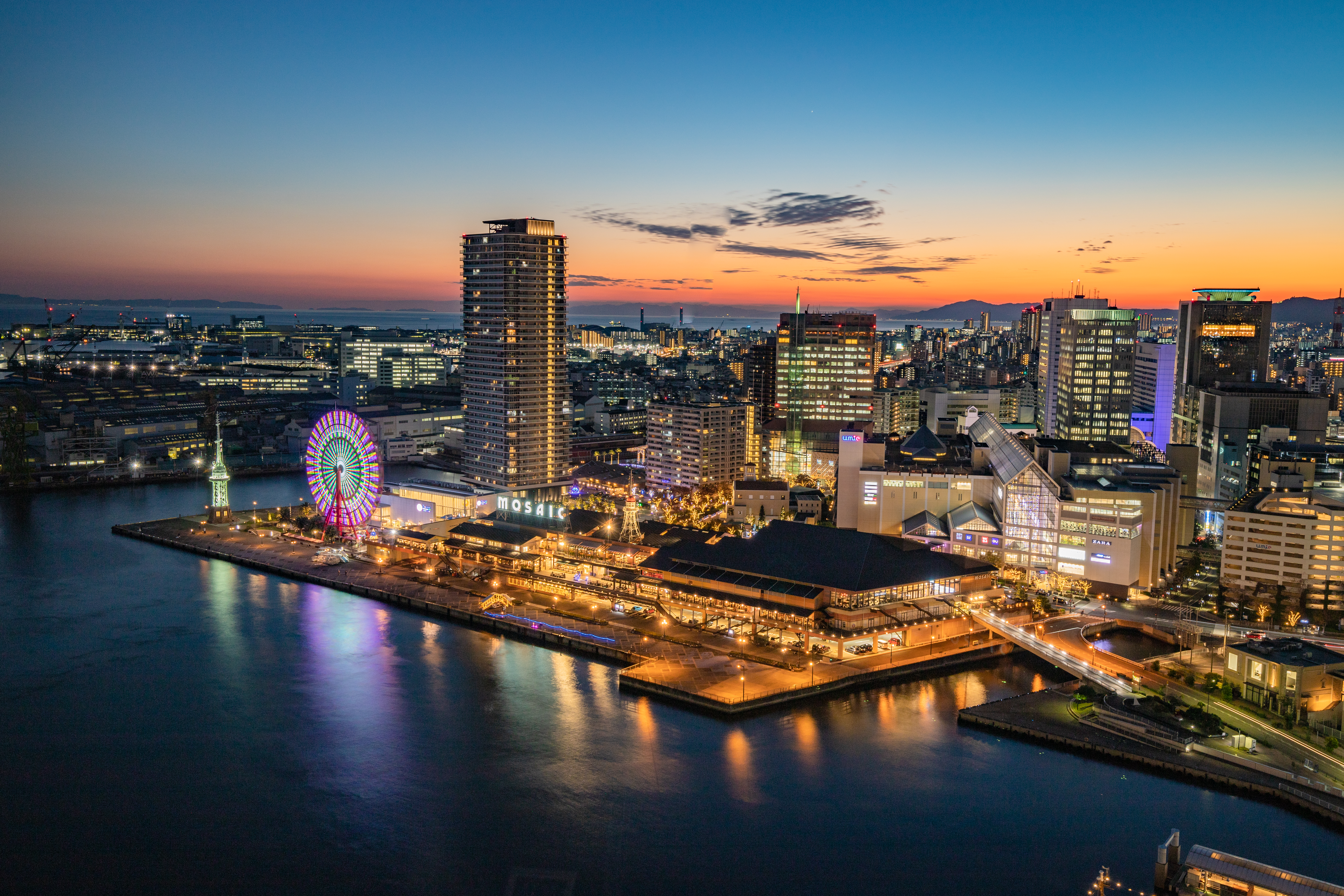 A sweeping view of Kobe landmarks such as the giant Ferris wheel (Photo: Kobe Tourism Bureau).
A sweeping view of Kobe landmarks such as the giant Ferris wheel (Photo: Kobe Tourism Bureau).
Inside the tower, the observation floors are themed around “brilliance – kagayaki,” with a variety of creative touches.
On the fourth floor, the Brilliance Museum presents an interactive world of light, from neon-style art to walls that change color like a living coloring book when you hold out your hand.
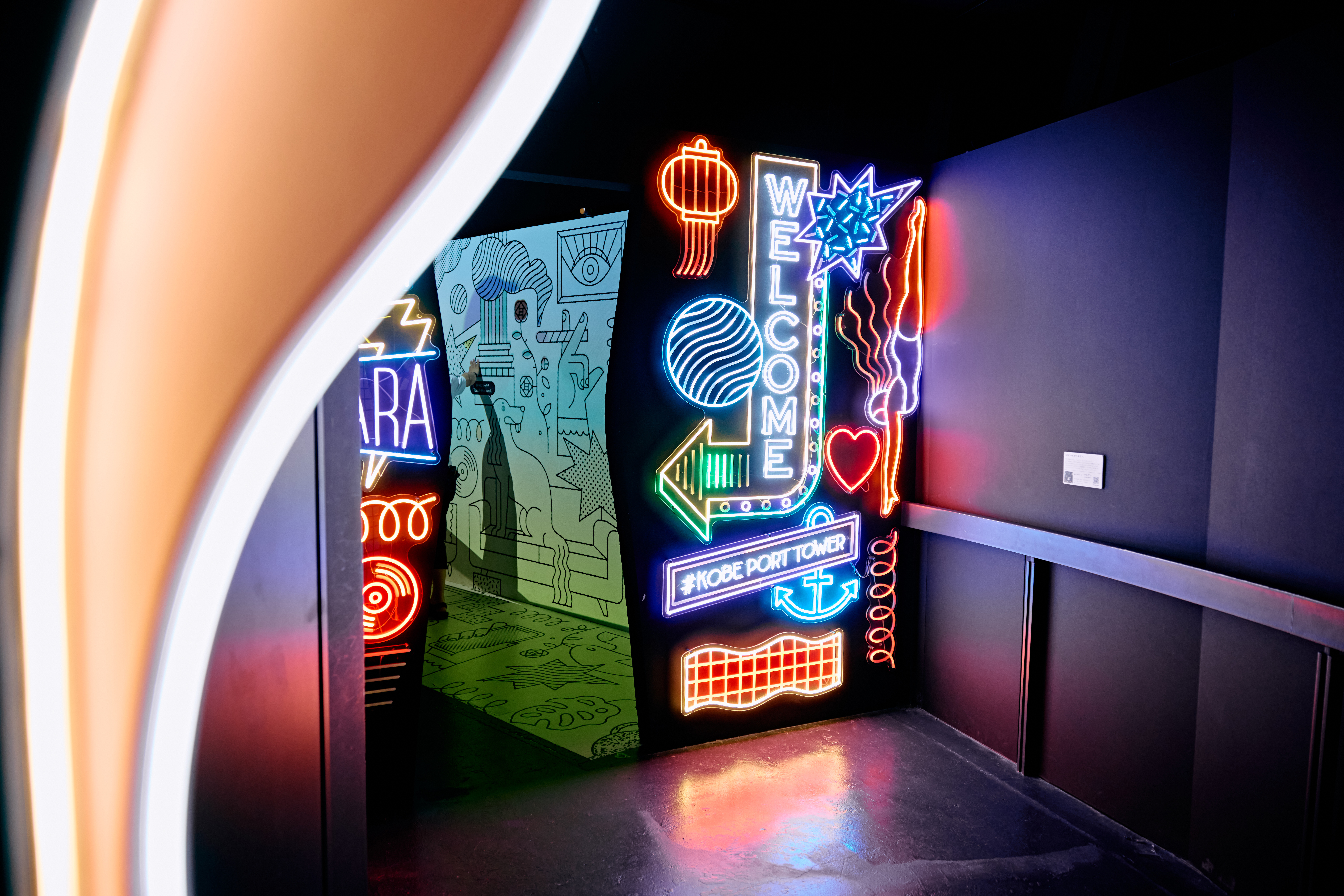
On the third floor, the revolving café and bar Ready go round—rare even across the whole of Japan—features a rotating floor. It makes a full turn every 30 minutes, letting guests enjoy light meals while watching the city slowly transform before their eyes.
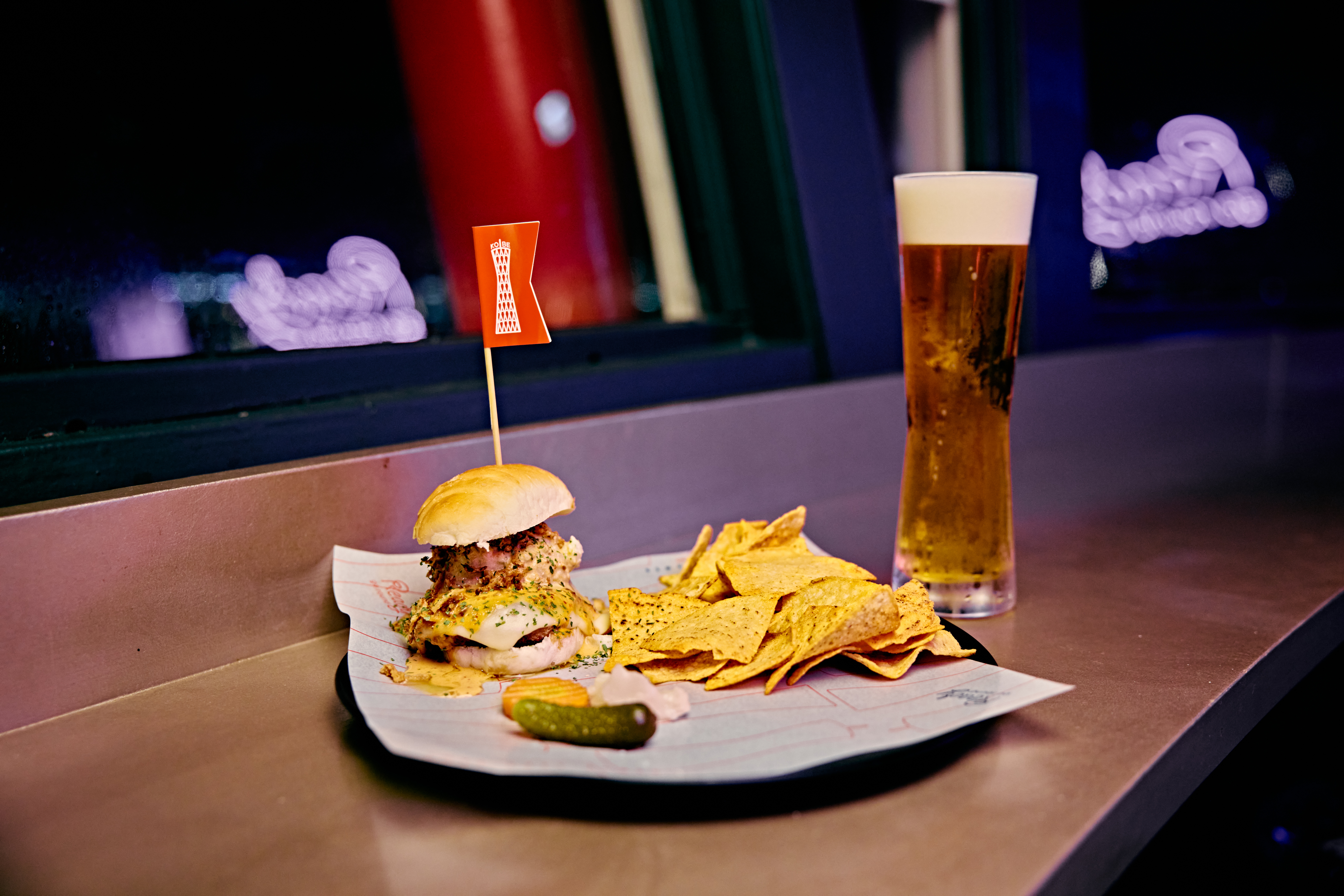 The dinner menu Kobe Port Tower Burger (1,200 yen à la carte, 1,700 yen with drink set).
The dinner menu Kobe Port Tower Burger (1,200 yen à la carte, 1,700 yen with drink set).
Looking down over Kobe’s sparkling city streets, it’s the perfect place to slowly savor the end of your special journey.
BOOK YOUR STAY IN KOBE
Mount Rokko Hiking
Contact: Trail Station Kobe
Website: https://kobe-rokko.jp/en/toreko/
Rokkosan Silence Resort
Address: 1034 Minami-Rokko, Rokkosan-cho, Nada-ku, Kobe, Hyogo
Tel: 078-891-0650
Opening Hours: Sora no Dining, lunch 11:00–16:00, dinner 16:00–20:30 (last entry 19:00, last order 20:00); Cafeteria, 11:00–18:30 (last order 18:00)
Closed: Mondays. From winter, closed Monday–Thursday (except holidays; open on holidays but closed the following day).
Website: https://rokkosansilence-resort.com/
“Gaina Falls” and Mountain Stream Wellness Nature Tour
Contact: Awaji Island Tourist Association
Tel: 0799-22-0742
Hours: Monday–Friday, 9:00–17:00
Price: Registration fee 3,000 yen per person, plus participation fee (tip system).
Website: https://www.awajishima-kanko.jp/taiken/detail.php?id=49
AiAii Indigo Dyeing Studio & Shop
Address: 2-3-19 Kaigan-dori, Sumoto, Hyogo
Tel: 0799-20-5252
Opening Hours (shop): Friday & Saturday, 10:00–17:00
Closed: Sundays
※ Indigo dyeing experience available Monday–Saturday by reservation only
Prices: Tenugui hand towels or handkerchiefs from 2,500 yen
Website: https://aiaii.blue/
Kobe Port Tower
Address: 5-5 Hatoba-cho, Chuo-ku, Kobe, Hyogo
Opening Hours: Observation floors & rooftop deck, 9:00–23:00 (last entry 22:30); 2nd floor shop, 9:00–22:00; lower floors, 10:00–20:00; 3rd & 4th floors, 11:00–21:00 (until 22:00 on Fridays, Saturdays, and the day before holidays)
Closed: Open daily (no regular holidays)
Admission: Observation floors + rooftop deck, 1,200 yen; observation floors only, 1,000 yen
Website: https://www.kobe-port-tower.com/
https://kobe-rokko.jp/en/climbing-main/
https://kobe-rokko.jp/en/climbing-main/
https://kobe-rokko.jp/en/nightview-1/
https://rokkosansilence-resort.com/
https://www.tcmit.org/english/about/modernization
https://www.town.inagawa.lg.jp/index.html
https://www.kobe-port-tower.com/shop/brilliance-museum/
Miyakei (Miyataki) 360° Panorama View



